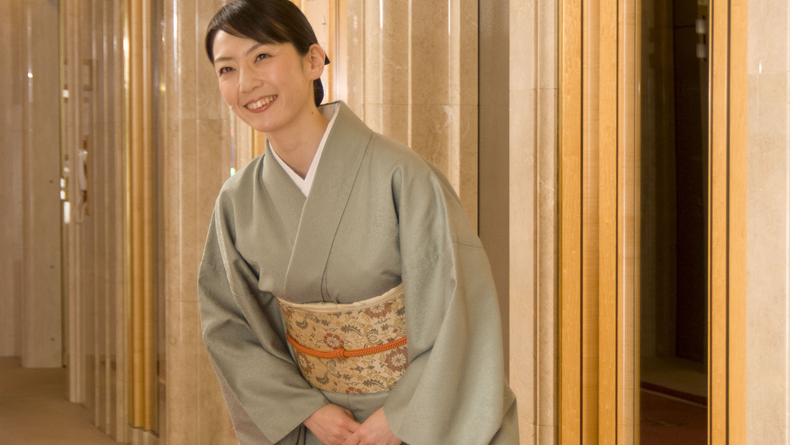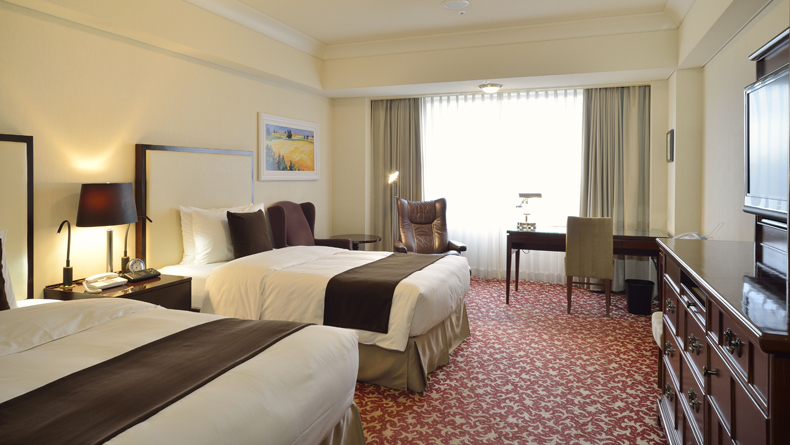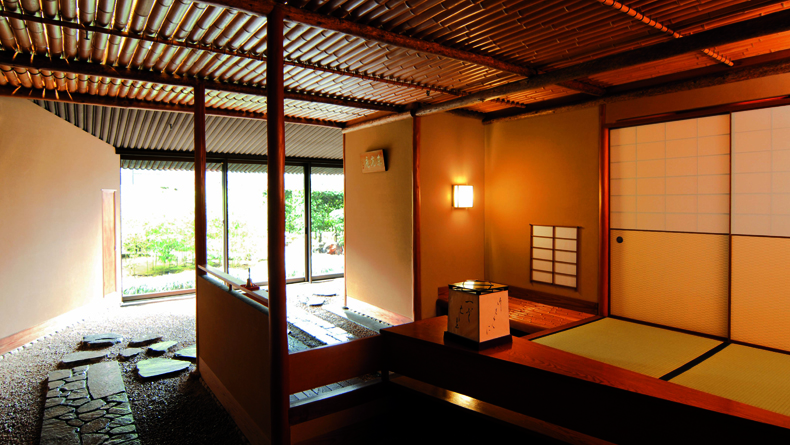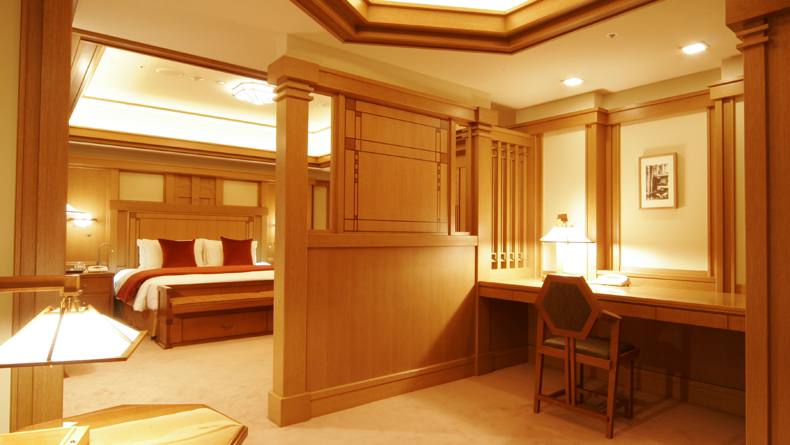Top-Notch Japanese Hospitality at the Imperial Hotel
I declined when the guest attendant offered to take my suitcases. They were wet with rain, and she was in a kimono. But before I could protest, she had deftly wrangled all my bags was gliding down the tall corridor to call for the elevator.
This was only the beginning of the hospitality at the storied Imperial Hotel, which has discreetly hosted countless high-ranking officials and global celebrities in its 124-year history. The guest attendant badged us through the sliding glass door to our floor with a sweep of her kimono sleeve against a card reader, and we were shown to our room. She made a fresh pot of tea as we settled in and admired the nighttime view of the city below. She then explained in English the features of the room, including the bedside control panel for all the lighting, and the bathtub that filled with a touch of a button.
The decor is handsome, with brown leather accents and dark wood furniture. A large desk and comfy leather recliner look down on the mesmerizing stream of city traffic and the calm of the imperial grounds. (The view of the palace is oblique, however—when the hotel was built, new buildings in the area were not allowed to be oriented with a direct view of it.)
As soon as the attendant bowed and left, I pressed the button on the tub, washing up under the separate rainshower and then sinking into the deep, hot water. It was one of my last nights in Japan, and I knew the luxurious Japanese bathtub was one of the things I’d miss most about living here.
The hotel’s famous service highlights the delightful attention to detail that feels particularly Japanese. Turndown service includes not only a white mat laid out at each the side of the bed, but a hand-written note and a hand-folded origami sculpture placed on the pillow instead of a mint. The operator greets you by name when you call the front desk. And if you don’t sound convincingly alert when you answer your wakeup call, you are likely to get a call back in a few minutes making sure you made it out of bed.
If the guest attendants spot you heading outside in running gear (which the hotel will be happy to lend you if you haven’t brought your own), they will hand you a map and description of the popular five-kilometer jogging route that encircles the grounds of the Emperor’s palace. They also lend swimwear for the small but brightly skylit swimming pool. The pool is free for guests staying in rooms on the Imperial Floors, and costs a small surcharge for those in other rooms.
With prior arrangements, guests may experience a traditional Japanese tea ceremony on the tatami mats of the Imperial’s own tea house. (The teahouse was closed while we were there, but we did enjoy a modernized green tea experience at Ippodo, within walking distance.)
The hotel has more than a dozen dining options, including Les Saisons, renowned for chef Thierry Voisin’s Michelin-starred cuisine, and Japanese options ranging from sushi to tempura. For our last weekend in town, however, we were glad the hotel was so close to the maze of little yakitori places under the tracks in Yurakucho that we wanted to get to one more time.
The Imperial Hotel is in its third incarnation. When it was built in 1890 to entertain visiting Europeans, it was the first Western-style hotel in Japan and the first to serve steak. It was rebuilt in 1923, in a rather flamboyant Mayan style created by Frank Lloyd Wright. His insistence on including a reflecting pool that could double as an emergency water supply was prescient—the great Kanto earthquake struck on the day of the re-opening ceremony. The hotel survived the quake with little damage and served as a shelter. The current building opened in 1970. After the Tohoku earthquake in March 2011, it again welcomed hundreds of Tokyo workers stranded by stopped trains.
There are still traces of the Frank Lloyd Wright era throughout the building. Stepping into the Old Imperial Bar is like stepping back in time: the furnishings are all reproductions of Wright’s striking original 1923 art deco designs. There is a slab of the original rough oya stone wall mounted at one end of the room and a mural behind the bar. Spending a night in the Frank Lloyd Wright suite surrounded by furniture and fixtures he designed might be the ultimate immersive experience for serious fans of the architect. For a less extravagant taste of his work, the hotel gift shop has china in Wright’s original linear patterns.
The hotel is conveniently situated between the shopping and dining options of Ginza, the business corridor of Marunouchi and the beauty of the Imperial Palace grounds. It’s also convenient to Tokyo station and a handful of subway lines. Whether visiting Tokyo for the first time or bidding the city a fond farewell, the Imperial Hotel will make an impression that is memorable—and wonderfully Japanese.
The Deets
Address: 1-1-1 Uchisaiwaicho, Chiyoda-ku, Tokyo
Tel: 03-3504-1111
Access: Near Hibiya Station on the Hibiya, Chiyoda and Toei Mita Subway Lines
Rates: Starting from around ¥20,000 per person per night
View Larger Map


















Leave a Reply